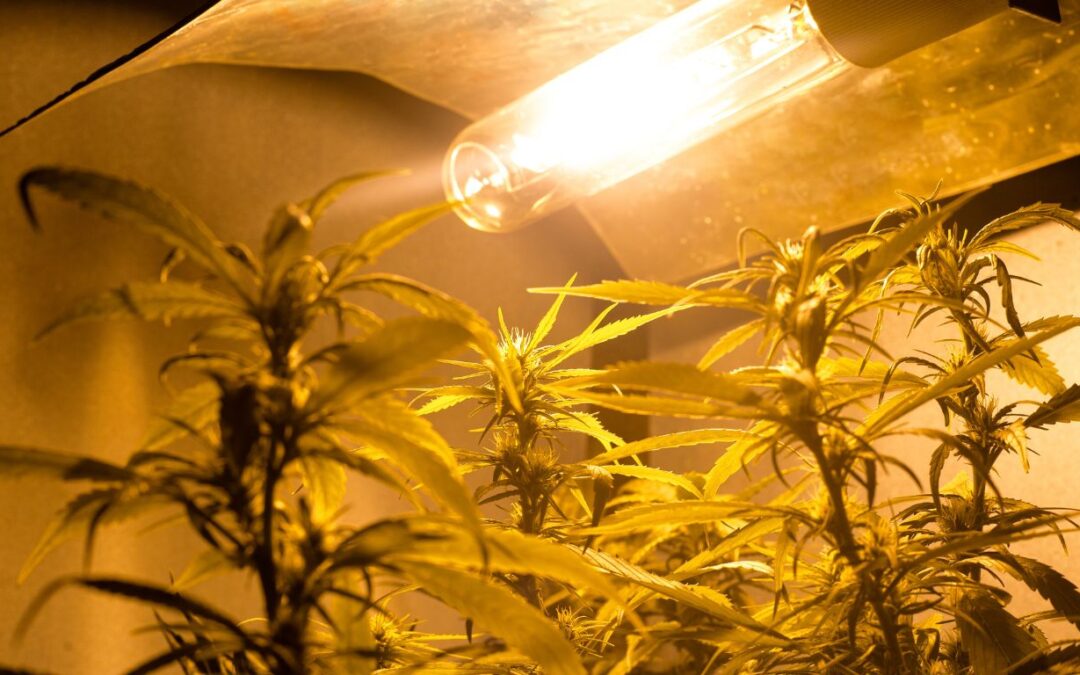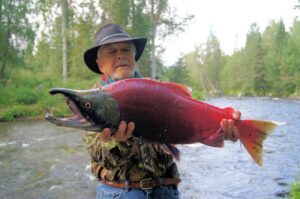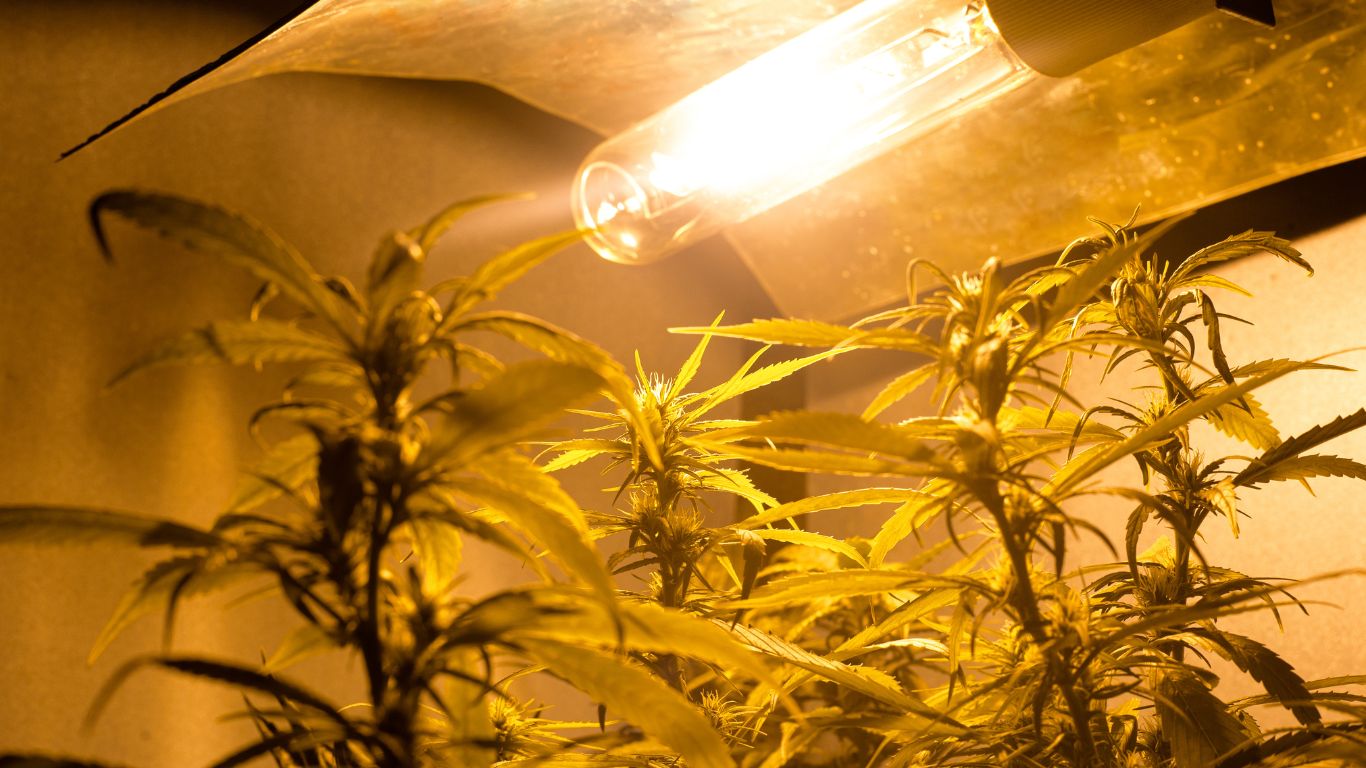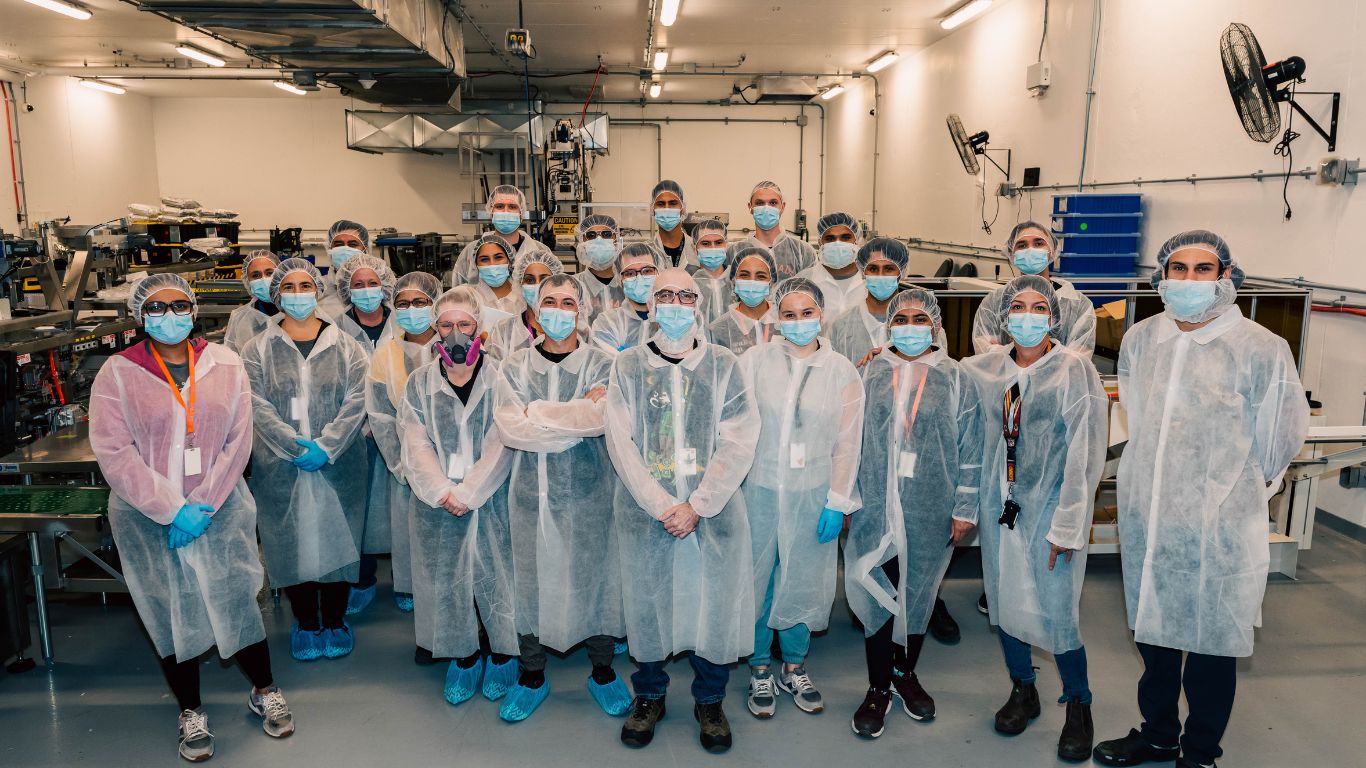
by Grow Up Conference | Dec 16, 2024 | Media Partners, Stratcann
Health Canada recently sent a memo to provincial colleges of physicians and surgeons advising them that it may contact health care practitioners to ask for evidence to support the amount of cannabis they have authorized for their patients.
The memo includes information highlighting the regulator’s ongoing efforts since 2019 to address authorizations of large amounts of cannabis several times over the industry average.
Reads the document, in part: “In an effort to facilitate the application process for patients, we would like to take this opportunity to advise you that the Department may contact health care practitioners to ask for evidence to support the amount of cannabis that they have authorized for their patient. This information may include data, references, or resources to support the authorized daily quantity. This evidence will support the Department in assessing the risk to public health or public safety before making a final decision on the application.”
The College of Physicians and Surgeons of Manitoba (CPSM) recently shared that it was asking its members to review the recent updates from Health Canada.
It’s not the first time Health Canada has sent notices to provincial colleges of physicians informing them of health care practitioners connected to numerous high gram-a-day authorizations. In 2020, the Saskatchewan College of Physicians and Surgeons levied a $15,000 disciplinary action against a Saskatchewan doctor found to be profiting from issuing medical cannabis licences in 2018.
In 2021, a medical cannabis patient who had been authorized 100 grams a day had a court reject an allowance for the patient to possess up to 1,000 grams in public at a time.
In a memo from October 2022, Health Canada said that since it began a new process to address high authorization amounts through the program, the agency had observed a decrease of more than 50% in the number of individuals registering to produce cannabis for medical purposes.
The memo continued that in September 2021, approximately 47,000 individuals registered with Health Canada. By September 30, 2022, the number of registered individuals had dropped to approximately 21,700. As of March 2024, it was 15,726, although numbers began to show an uptick after several years of decline.
The regulator has also refused or revoked over 1,400 registrations, including more than 700 for public health and safety reasons. This represents a 113% increase in refusals and revocations and a 423% increase in the number of refusals and revocations made on the grounds of public health and public safety since March 2022.
While 4,728 healthcare practitioners were associated with registrations made with federally licensed sellers in the previous twelve months, 1,105 were associated with active personal/designated production registrations.
Of those 1,015, there were 233 healthcare practitioners associated with authorizing amounts equal to or above 25 grams per day, and just ten who authorized amounts equal to or above 100 grams per day.
Most (78%) healthcare practitioners who authorized more than 25 grams a day were in BC or Ontario. All who authorized more than 100 grams a day were in BC and Ontario. An authorization of 100 grams a day would equate to a limit of 487 plants at any given time. Such licences can also be combined to up to four per location, meaning a designated grower with several authorizations could be growing hundreds or even thousands of cannabis plants with the potential to produce in the hundreds of kilograms of cannabis a year.
Related Articles

by Grow Up Conference | Dec 15, 2024 | Media Partners, The New Agora
Agora and the Art of War:
Synergizing Ancient Wisdom
With New libertarian Philosophy
History is full of timeless texts, and wisdom that make us think about the world around us differently. Two of these, “The Art of War” by Sun Tzu and, the modern-day philosophy of agorism by Samuel Edward Konkin the third, may seem like they have nothing in common. But if you delve deeper, you’ll find that they’re more similar than one might think and that by combining the two we can not only learn and grow but become better agorists. Let’s listen to the ancient warrior Sun Tzu:
“Victorious warriors win first and then go to war, while defeated warriors go to war first and then seek to win.” (Sun Tzu, The Art of War)
The Battleground of Agorism
Today’s world is a battlefield for freedom, where government control and manipulation are normal. But agorism gives us a way to fight back without aggression. Instead of fighting a losing battle using politics and laws, agorists focus on building a free society through voluntary actions and underground markets. By understanding how Sun Tzu conquered his enemies in ancient times, we can apply that same knowledge to break free from government chains and build a beautiful world we’d like to see.
Undermining the Enemy
Sun Tzu said to use deception and surprise as weapons, and that’s exactly how agorists operate. “All warfare is based on deception… If you know the enemy and know yourself, you need not fear the result of a hundred battles.” (Sun Tzu, The Art of War). Agorists hide from the government’s snooping, with fake names, encrypted messaging, and secret deals. We wage secret warfare against their whole system by staying under the radar while we build a new, freer society.
Always Adapting
One key to ancient warfare was the ability to change and adapt, just like agorists have to in today’s world. “He who is able to adapt himself to changing conditions will live.” (Sun Tzu, The Art of War). As government control gets worse, agorists stay ahead of the game by inventing new ways to trade and live free. This could be through cryptocurrencies, growing our own food, or trading with each other in secret. The key is to never stop finding new ways to beat them at their own game.
Strength in Numbers
To win on the ancient battlefield, warriors had to work together. Agorists know that cooperation is just as important for our struggle! We have to band together and help each other. Build networks, create communities, and support those who share our fight for freedom. With more strength and unity the harder it’ll be for the government to put a stop to our progress.
Taking the High Ground
Knowing where you stand, just like in an ancient battle, is vital to achieving victory. “To secure ourselves against defeat lies in our own hands, but the opportunity of defeating the enemy is provided by the enemy himself.” (Sun Tzu, The Art of War). Agorists know their strengths, weaknesses, and most importantly, where the government is most vulnerable. By exploiting those weak spots and sticking to what we’re good at, we can slowly dismantle their control over our lives.
Morality Matters
Even though Sun Tzu was all about war, he knew morals mattered. And that’s the same for agorism. “Let your plans be dark and impenetrable as night, and when you move, let your actions be swift and merciless as the wind.” (Sun Tzu, The Art of War). Our fight isn’t based on greed; it’s about a world where everyone can live free and prosper. A world where we aren’t slaves to government and violence.
A Free Future Awaits
“The Art of War” teaches us about strategy, conflict, and how to beat the odds. And agorism is our way of applying that ancient wisdom to today’s world. As Sun Tzu said, “There has never been a superior man who did not first appear inferior.” (Sun Tzu, The Art of War). Remember, the fight for liberty is ongoing. But with cunning, cooperation, and an unyielding spirit, we are the ones destined for victory.
Brandon Aragon
Brandon A. Aragon is a leading figure in counter-economics and international agorism. Since 2002, he has been a passionate advocate for individual freedom and libertarian principles. As the founder of Agorist Nexus, Brandon has created a dynamic platform for like-minded individuals to engage in counter-economics and promote agorist ideals globally. With expertise in finance, counter-economics, technology, and individual sovereignty, he champions the use of cryptocurrency as a tool for financial freedom and resistance against centralized control. Through his writings, speeches, and activism, Brandon inspires others to embrace agorism as a pathway to true autonomy in an increasingly authoritarian world.

by Grow Up Conference | Dec 14, 2024 | Media Partners, The New Agora
The Farmed-Fishing Disaster
Problems in the Tank
 In the 21st century, wild fish are are being replaced with farmed fish, as livestock, in the aquaculture industry.
In the 21st century, wild fish are are being replaced with farmed fish, as livestock, in the aquaculture industry.
However, the growth of aquaculture has come at the expense of the environment and the health of the fish. This results in the potential for major disease problems and food safety issues, according to a 2022 article in Frontiers Immunology.
As livestock, fish succumb to the same synthetic treatments as other commercial livestock. According to MDPI, a member of the United Nations Global Compact, in the name of Sustainability: vaccines have a significant role in managing live stocks.
Vaccines have been applied as “preventive measures” in fish to reduce the chance of diseases such as rabies, as well as parasitic and bacterial pathogens, which occur as part of the commercial farming process. Rabies in fish? [That is another fish story for another time]. Meanwhile…
Salmon farms, consequently, are ideal incubators for parasites and infectious diseases that are then spread to adjacent farms and to wild fish. These outbreaks are impossible to quarantine; mass escapes from salmon farms and the normal flow of tides and currents spread diseases and parasites to other fish over very wide areas.
Even though fish are not of the animal kingdom, fish vaccines are delivered in the same way as warm-blooded animals. If we investigate all modes and vectors of disease transmission then we can also say that disease-causing pathogens may also be introduced through live-attenuated vaccines.
A vaccine contains an agent resembling a disease-inducing microorganism– a bacterium, virus or toxin – that activates the body’s immune system. A vaccine is essentially a pathogen-imposter. —Carrington College,
A Fish Story
Fish story: noun, an extravagant or incredible story
 Barbara Jackson from Pixabay” width=”395″ height=”262″>The $20-billion-a-year farmed salmon industry is the world’s fastest growing food producer, and it has made farmed Atlantic salmon the most popular fish on dinner tables North America. But at what cost?
Barbara Jackson from Pixabay” width=”395″ height=”262″>The $20-billion-a-year farmed salmon industry is the world’s fastest growing food producer, and it has made farmed Atlantic salmon the most popular fish on dinner tables North America. But at what cost?
As early as 2004, scientists found levels of polychlorinated biphenyls, a probable carcinogen known as PCBs, seven times higher in farmed Atlantic salmon than in wild salmon. In addition:
Untreated waste from excess feed, decomposing fish, excrement, and chemical residue forms a toxic stew that kills or drives away marine life for hundreds of yards.
The management of farmed fish includes antibiotics, probiotics, injectable vaccines, breeding maintenance, nano-based drugs, and edible vaccines, all with monitoring requirements. Of course, disease resistant mutant strains result from antibiotic treatments. Hence, the vaccine program. When it comes to drug use in global aquatic products:
Long-term use of chemical inputs not only increases pathogenic bacteria resistance but also damages the fish and aquaculture environments, resulting in drug residues in aquatic products.
Disaster in the Making
In 2021, 81,000 fish escaped from an open-pen fish farm in Norway. In 2023, thousands of fish escaped an Icelandic farm. Escapees have been found in at least 32 rivers across north-west Iceland, many covered in deadly sea lice, lethal to wild fish. Escapees also breed with wild fish to cause wild fish declines.
A 2012-2022 study determined that 865 million farmed salmon have died in mass die-offs in the last decade due to aquaculture practices and technologies.
It’s the same old fish story, replayed over and over. When any life form is placed in crowded unsanitary conditions, and genetically modified, it becomes a pre-medicated disaster, for generations to come.
“In today’s fish-eat-fish world, you either take or you get taken.” Productivity runs economies! The result? Wild caught fish are harder and harder to find. Thus, commercially-farmed, diseased fish will be served up at restaurants, and at home.
You’d think cooking would destroy the parasites. But destroying the nematodes at 145 degrees is like cooking a burger well-done. – Harold McGee, Food and Cooking, 2016
[embedded content]
A Medley of Injectables
If you’ve ever had tetras in your aquarium, you have supported the Glofish industry of genetically modified fish injected with florescent dyes. Glofish are one symptom of an injectable aquaculture. If you are a Koi Hobbyist, you will be told to inject vaccines. Whether injected with dyes, dipped in chemicals, or tattooed, the fish have not given their permission to painfully modify their body. To reduce death by dyeing, simply avoid purchasing modified fish.
The aquaculture industry is suffering significant financial losses as a result of the worsening water quality and increasing frequency of aquatic disease outbreaks caused by the expansion of aquaculture. However, vaccination, is still the answer.
According to a review of aquaculture vaccine technologies, old technologies of killed and live-attenuated vaccines, are being replaced with a new generation of recombinant, synthetic peptides, mucosal vaccines, subunit, DNA and RNA vaccines, nanoparticle-based and plant based edible vaccines, reverse vaccinology, and monovalent and polyvalent vaccines.
Parasites in Farmed Fish
Farmed salmon are bred to grow fast in cages so crammed that they are rife with parasites and disease. The fish eat pellets of fishmeal, vegetables, and animal byproducts; they are doused regularly with pesticides and antibiotics. – Time Magazine, July 2022
 Do not assume that just because the fish are vaccinated that parasites do not still live on or in their slippery bodies. Conditions of overcrowding and poor sanitation have always been indicators of disease and infection in farmed animals, even in organically-farmed pork. In this way, the spironucleosis parasite can infest farmed fish through the freshwater source in hatcheries:
Do not assume that just because the fish are vaccinated that parasites do not still live on or in their slippery bodies. Conditions of overcrowding and poor sanitation have always been indicators of disease and infection in farmed animals, even in organically-farmed pork. In this way, the spironucleosis parasite can infest farmed fish through the freshwater source in hatcheries:
The parasite has been detected in wild salmonids living in freshwater that is used as a water source for hatcheries, which therefore represents a potential source of infection that we must try to control. — Lill-Heidi Johansen, scientist and project manager at Nofima.
While parasites (in the larval stage) can be eaten in uncooked, or undercooked, unfrozen wild seafood, they are also present a human health hazard in cooked farmed fish.
Salmon farms harbor two especially virulent parasites: sea lice and kudoa (soft-flesh syndrome). Sea lice infestations have been reported by operators in Canada, Norway, Scotland, and Ireland. – Pure Salmon Campaign
If you dine only on wild caught fish, be aware that parasites found among wild caught species are the nematodes or roundworms: (Anisakis spp., Pseudoterranova spp., Eustrongylides spp. and Gnathostoma spp.), cestodes or tapeworms (Diphyllobothrium spp.) and trematodes or flukes (Chlonorchis sinensis, Opisthorchis spp., Heterophyes spp., Metagonimus spp., Nanophyetes salminicola and Paragonimus spp.).
Farmed fish may be more resistant to the anasakis parasite infection. But, that is only one parasite studied. As always, more studies are needed.
The fish spend two to three years in open-net farms that contain up to a million salmon jammed into 10 or 12 cages, which extend 30 feet below the surface and are anchored to the seabed. The crowded cages are petri dishes for tiny parasites called sea lice. —Time Magazine, July 2022
Know Your Fish
 Not long ago, wild Atlantic salmon were an abundant species, living free. Today, they are an endangered species, gone from most rivers in the U.S.. Claims made by farmers that their fish are sustainable and natural are deceptive. Most consumers rarely have enough information to go on.
Not long ago, wild Atlantic salmon were an abundant species, living free. Today, they are an endangered species, gone from most rivers in the U.S.. Claims made by farmers that their fish are sustainable and natural are deceptive. Most consumers rarely have enough information to go on.
Up to 85 percent of the salmon we eat is imported from farms along the coasts of Norway, Chile, Scotland, and Canada. Yet the Food and Drug Administration, which is responsible for food safety, pays scant attention to farmed salmon at a time when food-borne pathogens are on the increase. —Time Magazine, July 2020
According to the book, Salmon Wars: The Dark Underbelly of Our Favorite Fish, a single meal per month of farmed Atlantic salmon can expose consumers to contaminant levels exceeding standards from the World Health Organization. The risk is greatest for infants, children, and pregnant women. The authors, in their article, 3 Reasons to Avoid Farmed Salmon, suggest “farmed Atlantic salmon from open-net pens is off our menu and should be off yours.”
So much for Sustainability.



by Grow Up Conference | Dec 14, 2024 | Garden Culture Magazine, Media Partners
Inspired by Small Business Saturday, I decided to shop for locally-made gifts this holiday season. Christmas markets are a great place to go as they promote local businesses and artisans using ethically sourced items. At Shipyards Christmas Market in North Vancouver, rows of tiny wooden cabins and Christmas tunes got this elf into the shopping spirit. You should head to your local market and take in everything it offers!
Why Shop Local Christmas Markets?


Shopping at a local Christmas market is the ultimate holiday activity!
Edible Delights
A ‘Buy BC’ logo on a product means it was grown, raised or made in the province. This became my north star as I browsed. Find out if your region uses a unique “local” logo. Christmas markets are not farmer’s markets, so don’t expect fresh zucchini, but that doesn’t mean there aren’t local food products. I found liqueur made from locally grown cranberries produced in the Fraser Valley. There were tisanes sourced from herbs grown on Vancouver Island, local honey (which always supports the pollinators) and cider made from heirloom apples grown on a 100-year-old orchard in B.C’s Okanagan Valley – the largest fruit-producing region of the province.
A Botanical Treasure Trove
I was surprised to learn that a study by LOCO BC suggests a 10% shift in consumer spending towards independent businesses would generate 4.3 billion dollars annually for B.C.’s economy. The stats are similar everywhere, and a Christmas market is a treasure trove. Handmade candles were infused with calendula botanicals sourced from a local flower farm. I also found vendors selling essential oils distilled from local herbs and flowers that can be used as bath balms or in a diffuser.
Talking to Vendors
The holidays are the most lucrative time for local entrepreneurs eager to tell you about their goods. Talk to them and ask how they make and source products and what it takes to sell locally. Ask about their community support. SCORE fosters vibrant small business communities through mentoring and education. The organization reports that in the U.S., 75% of small business owners donate an average of 6% of their annual profits to local community charities. It’s so nice to make connections with artisans in your neighborhood!
Indeed, Christmas markets are generally more expensive than shopping at big box stores. Remember the craftsmanship and that every dollar spent locally has an economic impact up to 4.6 times higher than a dollar spent on non-local goods.


Help Promote Local
Many vendors at Christmas markets don’t have shops; be sure to ask for a business card or their social media information and follow them. I came home with a pile of business cards I will include with the gifts I bought and for future contact and purchases. It’s a great way to support them and the local economy.
Feel, Touch, Smell and Eat
Be ready for lots of hands-on experiences. I was invited to try on toques made from local lamb’s wool. I ate sugar cookies and candy and sipped mulled wine, liqueur, and tisanes. You don’t often have the chance to do these things in traditional stores! It was a wonderful social experience.
Festive Discoveries Await
Just as you would smell the flowers while walking through a garden, do the same at a Christmas market. You might be surprised at what you will discover. Who knew local cranberries could be made into a sweet, albeit tart and peppery-tasting, liqueur?
Happy Holidays!

by Grow Up Conference | Dec 14, 2024 | Media Partners, Stratcann
This past week in weed, StratCann looked at how the Canada Post strike is affecting medical cannabis access, a group in BC is looking at the long-term effects of cannabis remediation, and a credit union in BC is helping producers survive in a challenging landscape.
We also explored how researchers in Saskatchewan are looking at how edibles can impact driving, and we reported on how the Federal government was unable to implement an “ambitious” program to better streamline cannabis pardons.
In financial news, a court rejected Final Bell’s equity claims against BZAM’s monitor and again extended the stay of proceedings, and Galaxie Brands announced that they have successfully exited the CCAA process.
In law enforcement news, a Health Canada referral led to a large cannabis seizure at a former designated medical cannabis production site in Ontario, and the CBSA and RCMP seized 45 kg of cannabis destined for the Netherlands. Police in Ontario also recently recovered stolen cannabis.
In other Canadian cannabis news
The federal government ordered the Canadian Industrial Relations Board to send Canada Post employees back to work if an agreement is not reached soon with their employer.
Tilray Brands, Inc. announced a new Holiday campaign highlighting a series of cannabis-infused beverages from two of its beverage brands, XMG and Mollo, and its JUICED XTREME Resin Infused Pre-rolls.
On Wednesday, December 18, 2024, prior to market opening, Organigram Holdings Inc. will report earnings results for its fourth quarter and fiscal 2024 ended September 30, 2024.
High Tide Inc. announced that its Canna Cabana retail cannabis store, located at 5921 Perth Street, Richmond, Ontario, will open on Saturday, December 14. This opening will mark High Tide’s 189th Canna Cabana-branded retail cannabis location in Canada and the 75th in Ontario.
The OCS shares some of its best sellers in 2024.
The Institute for Work and Health released a report on Cannabis use by workers before and after legalization in Canada.
Cannara Biotech will host an investor webcast on Thursday, December 19th, 2024.
The Yukon government recently posted the Happy Trails Cannabis’ licence application public notice. Public feedback is open until December 27, 2024. The proposed location is 516 Adela Trail, Watson Lake, Yukon.
CannExpo is coming to Toronto’s Queen Elizabeth Building at Exhibition Place on March 21-22, 2025.
International cannabis news
The BBC went inside the UK’s ‘secret’ £10m medicinal cannabis factory.
In November, Philadelphia CBP officers continued to seize London-bound cannabis after grabbing a combined 179 Pounds. The parcels were being shipped from multiple addresses in California to various addresses in the UK.
And finally, research from Harvard reveals the cannabis market’s evolution has outpaced US regulations.

by Grow Up Conference | Dec 13, 2024 | Cannabis News Wire, Media Partners
A United States appeals court seemed inclined to reject claims made by several marijuana businesses in Massachusetts, which argued that federal laws prohibiting cannabis are no longer constitutional.
The businesses, represented by prominent attorney David Boies, contend that significant changes since the Supreme Court upheld federal marijuana laws in 2005 make the prohibition outdated. Currently, 38 states have legalized medical or recreational cannabis. Boies argued that Congress’s original intent to eliminate cannabis nationwide has shifted, citing legislation and policy changes that reflect a more lenient approach.
Despite his arguments, the judges appeared skeptical. Judge Julie Rikelman, appointed by President Joe Biden, emphasized that Congress still aims to regulate controlled substances, including cannabis, to manage both legal and illegal markets. “That has not changed,” she noted, suggesting that federal regulation remains a valid objective.
The lawsuit, initiated last year, involves Massachusetts-based Canna Provisions, a cannabis retailer; Gyasi Sellers, who operates a cannabis delivery service; Wiseacre Farm, a grower; and Verano Holdings Corp. (CSE: VRNO) (OTCQX: VRNOF), a publicly traded multistate cannabis company. In July, Judge Mark Mastroianni, appointed by former President Barack Obama, dismissed their case, stating that only the Supreme Court could overturn its 2005 ruling.
In the 2005 ruling, the court held that Congress has the authority under the Commerce Clause to criminalize cannabis possession and use, even in states that legalize it for medical use under the CSA.
The plaintiffs argue that the 2005 rationale has been undermined by subsequent legal and policy developments. They cited a 2021 statement by Justice Clarence Thomas in which he questioned whether the reasoning behind the decision still holds.
Boies also highlighted congressional actions that reflect a changing approach to cannabis. In 2014, Congress prohibited the Justice Department from using federal funds to interfere with state medical cannabis programs. Additionally, in 2010, Congress allowed the use of medical cannabis in Washington, D.C. More recently, the DOJ moved to reclassify cannabis as a Schedule 3 substance, a less severe category than its current Schedule 1 status. A hearing on this potential reclassification is set for January 2025.
Despite these changes, Judge David Barron, another Obama appointee, expressed doubt that these legislative carve-outs indicate a complete shift in federal policy. He questioned how these isolated measures prove that the federal government has abandoned its stance, especially when the overarching prohibition on cannabis sales remains in effect.
This case, Canna Provisions Inc. vs. Garland, continues to highlight the tension between state-level legalization and federal prohibition, a conflict that has yet to be resolved.
About CNW420
CNW420 spotlights the latest developments in the rapidly evolving cannabis industry through the release of an article each business day at 4:20 p.m. Eastern – a tribute to the time synonymous with cannabis culture. The concise, informative content serves as a gateway for investors interested in the legalized cannabis sector and provides updates on how regulatory developments may impact financial markets. If marijuana and the burgeoning industry surrounding it are on your radar, CNW420 is for you! Check back daily to stay up-to-date on the latest milestones in the fast -changing world of cannabis.
To receive SMS alerts from CNW, text CANNABIS to 888-902-4192 (U.S. Mobile Phones Only)
For more information, please visit https://www.CannabisNewsWire.com
Please see full terms of use and disclaimers on the CannabisNewsWire website applicable to all content provided by CNW, wherever published or re-published: https://www.CannabisNewsWire.com/Disclaimer
CannabisNewsWire
Denver, CO
www.CannabisNewsWire.com
303.498.7722 Office
Editor@CannabisNewsWire.com
CannabisNewsWire is powered by IBN

by Grow Up Conference | Dec 13, 2024 | Cannabis News Wire, Media Partners
A new study has found that marijuana users with epilepsy typically spend fewer days in the hospital for epilepsy-related issues compared to people with epilepsy who didn’t use cannabis. Data from the study shows that epileptic individuals who used cannabis had an elevated epilepsy event capturability rate and reduced hospital stays.
Although medical and recreational marijuana is legal across dozens of states, research into the drug’s potential medical benefits is still in its infancy. Oliver Hoerth from Mayo Clinic’s Department of Neurology’s Division of Epilepsy says the researchers determined that they needed more information about how THC, the main psychoactive compound in marijuana, affected epilepsy patients under observation.
A few past studies found that cannabis may have some effect against epilepsy and seizures but further research is needed to truly understand the connection between cannabis, THC, and epilepsy. For the recent study, Hoerth and his Mayo Clinic colleagues analyzed how hospital admission, length of stay, and epilepsy-related event recording in the epilepsy monitoring unit (EMU) were affected by marijuana use among patients with epilepsy.
They used admissions data from 2023 that included 191 epileptic patients with 61 cannabis users and 130 non-users and conducted an event capturability analysis of 151 patients who were admitted to the Mayo Clinic epilepsy monitoring unit with 53 marijuana users and 98 non-users. An epilepsy event was captured in 44 of the users as well as 64 of the non-users.
The team’s analysis led to the discovery that marijuana users had a mean admission length of 3.2 days compared to 3.8 days for non-cannabis users. Furthermore, the event capturability rate for patients with epilepsy who used cannabis saw an 18.1% jump compared to non-users in the admissions database.
Study data also shows that cannabis users had a higher likelihood of possessing psychological condition-related epilepsy risk factors such as mental, sexual, and sexual abuse, generalized anxiety disorder, and major depressive disorder. This could be because several past studies have found cannabis can help manage mental disorders such as anxiety and depression. A growing number of Americans now use the drug for mental health reasons.
However, as cannabis research is still a vastly unexplored field, Hoerth and his colleagues at the Mayo Clinic noted that further study is necessary to truly understand the neuropsychological effects of cannabis use in individuals with epilepsy as well as how the drug affects overall brain health, mood disorders, and cognitive function.
When studies publish their findings indicating that marijuana use could reduce the amount of time epileptic patients spend in hospital, entities like Canopy Growth Corp. (NASDAQ: CGC) (TSX: WEED) are encouraged to keep bringing medical marijuana products to the market since their full direct and indirect positive effects are only beginning to be documented.
About CannabisNewsWire
CannabisNewsWire (“CNW”) is a specialized communications platform with a focus on cannabis news and the cannabis sector. It is one of 70+ brands within the Dynamic Brand Portfolio @ IBN that delivers: (1) access to a vast network of wire solutions via InvestorWire to efficiently and effectively reach a myriad of target markets, demographics and diverse industries; (2) article and editorial syndication to 5,000+ outlets; (3) enhanced press release enhancement to ensure maximum impact; (4) social media distribution via IBN to millions of social media followers; and (5) a full array of tailored corporate communications solutions. With broad reach and a seasoned team of contributing journalists and writers, CNW is uniquely positioned to best serve private and public companies that want to reach a wide audience of investors, influencers, consumers, journalists and the general public. By cutting through the overload of information in today’s market, CNW brings its clients unparalleled recognition and brand awareness. CNW is where breaking news, insightful content and actionable information converge.
To receive SMS alerts from CNW, text CANNABIS to 888-902-4192 (U.S. Mobile Phones Only)
For more information, please visit https://www.CannabisNewsWire.com
Please see full terms of use and disclaimers on the CannabisNewsWire website applicable to all content provided by CNW, wherever published or re-published: https://www.CannabisNewsWire.com/Disclaimer
CannabisNewsWire
Denver, CO
www.CannabisNewsWire.com
303.498.7722 Office
Editor@CannabisNewsWire.com
CannabisNewsWire is powered by IBN

by Grow Up Conference | Dec 13, 2024 | Media Partners, Stratcann
Puslinch, Ontario – December 10, 2024 – Galaxie Brands, a leader in cannabis co-packing and automation, proudly announces the successful conclusion to the Companies Creditors Arrangement Act (CCAA) process, marking the start of a new exciting chapter.
Bolstered by strengthened partnerships, major new client relationships, and operational enhancements, Galaxie is well-positioned to redefine excellence in full-service co-manufacturing, covering cannabis packaging, manufacturing, storage and logistics.
In a significant step forward, Galaxie Brands has brought on large co-manufacturing clients to produce and pack pre-rolls for their flagship brands, with current production of several hundred thousand PRs per month, expected to increase in the coming months. This partnership underscored Galaxies’ reputation for delivering high-quality, automated co-packing solutions and highlights its commitment to working with industry leaders to bring best-in-class products to market.
Throughout the CCAA process, Galaxie not only maintained operations but achieved significant milestones, including deepening partnerships with TobaGrown/TobaRolling in Manitoba. Together, Galaxie provided the horsepower to TobaGrown’s presence in Manitoba, enabling an uninterrupted supply to the existing SKUs in-market at a winning price point. The companies continued forward, launching multiple successful products bolstering Galaxie’s portfolio and expanding TobaGrown’s presence in the MB market. These efforts include producing pre-rolls, sourcing premium flower, excising, and shipping products back to Manitoba. Continuing into December, TobaGrown will be launching a line of AIO vapes, infused pre-rolls and blunts, and an expanding line of edibles. The collaboration was pivotal in generating strong revenue and positioning both companies for sustained success.
With a focus on automation, cost efficiency, and client-first service, Galaxie specializes in pre-creation (standard, infused and coated), pre-roll packaging, flower packaging and edibles. The company’s state-of-the-art facility enables it to deliver industry-leading turnaround times and pricing, making it the preferred partner for cannabis producers across Canada.
Guiding Galaxies’ future is a new Chief Operating Officer, Richard Aranha, who has extensive experience in cannabis operation and supply chain management, and brings fresh energy to the company leadership. Formally with TGOD for six years and BZAM following the merger, Aranha held key roles such as Facilities Engineer, Supply Chain Director and Director of Continuous Improvement. His engineering background and deep understanding of the cannabis industry are instrumental in driving Galaxie’s automation strategy and operational excellence.
“Galaxie is the perfect launchpad for mid-sized companies across Canada, as is evidenced by the growth of TobaGrown portfolio and sales – with our very significant capacities, we are able to offer companies the ability to scale, enjoy low production costs and keep COGS at a minimum, avoid the challenges of having to manage fluctuating labour requirements, and to serve nearly every major market in Canada in all major product categories. Galaxie is positioned for turn-key services for brands of all sizes to be able to enter and grow in the market. Given our position as a service provider to so many brands, we find ourselves in the nexus of many different verticals – our scale enables efficiencies that we are determined to pass on to our customers to form an unbeatable overall ecosystem of value. I am privileged to lead the Galaxie team.” said Mr. Aranha.
Under Aranha’s leadership, Galaxie has implemented and streamlined processes, enhancing transparency and efficiency. These improvements reflect Galaxie’s commitment to providing the best quality and value in the industry.
As the company looks to the future, Galaxie is focused on building additional partnerships with licensed producers, expanding the market presence of brands it works with, and delivering innovative solutions tailored to its client’s needs. The company is poised to become Canada’s top choice for automated co-packing and manufacturing services.
About Galaxie Brands
Galaxie Brands is a licensed producer and copacker of cannabis and cannabis products, specializing in pre-roll creation, pre-roll packaging, and flower packaging. Operating from its advanced facility and Puslinch, Ontario, Galaxie is committed to providing unmatched quality, efficiency, and value to its partners across Canada.
For media and related inquires, contact Jeremy Bouvet, National Marketing Manager, Galaxie Brands: [email protected].
Sponsored Content by: Galaxie Brands

by Grow Up Conference | Dec 13, 2024 | Grow Opportunity, Media Partners
(GLOBE NEWSWIRE) Toronto – The Good Supply cannabis brand is launching a new product lineup just in time for the holidays. Good Supply’s holiday release celebrates the expansion of its fan-favourite product lines across Canada and includes new, high-potency formats crafted for cannabis enthusiasts.
Good Supply’s latest innovations include:
- JUICED XTREME Resin Infused Pre-rolls: A New Kind of Elevation. Produced 100% in-house with Good Supply’s hang-dried whole flower, the JUICED Xtreme pre-rolls feature a double infusion of full spectrum resin and naturally flavoured distillate. With its larger sized 0.6g cone, JUICED Xtreme offers a smoother, full spectrum entourage and delivers exceptional value with more cannabis content and higher THC per product than the existing JUICED collection.
JUICED XTREME’s first launch features two tropical blends produced from a full spectrum resin infusion and naturally flavoured distillate:
-
- Guava Sunrise (Indica): Free your mind with the infinite layers of guava and orange.
- Maui Mango (Sativa): A taste of the tropics with every puff of mango and passion fruit notes.
Good Supply’s JUICED XTREME full spectrum resin infused pre-rolls are now available in multipacks of 3 x 0.6g at select retailers across Canada.
- 2g 510 Vapes: With bigger carts and bolder flavours, the 2g vapes reflect the latest trends among Canadian cannabis consumers seeking longer-lasting, innovative products. Offering up to 4x the fruity flavours of the original 1g carts, these 2g vapes also have double-distilled and double-filtered THC distillate for a total of 1,600mg of uniquely blended cannabinoids. Each 2g vape has 1,000mg THC, 300mg CBG, and 300mg CBD – a first-of-its-kind combination for Good Supply. The vapes feature robust hardware with sustainable hemp-based mouthpieces2 and wider airflow designed for smoother sessions. Good Supply’s first series of 2g 510 vapes features two key fruity flavours with another on its way later this winter:
- Peach Bum (Sativa) featuring a peach, fruity, decadent profile.
- Purple Monkey (Indica) with grape, citrus, and fruity aromas.
- Blueberry Yum (Indica) – coming soon.
- Monsters: ‘The Grump’ Holiday Limited-Edition Pre-rolls, Canada’s powerful 1,000mg infused pre-roll returns. Packed into a hall-decking hybrid, present with festive packaging, Good Supply presents the second edition of its Grump Monster series. This year The Grump pre-rolls feature two new strain inputs featuring:
- Alien OG (Milled Flower).
- Green Monster (Butane Hash Oil, “BHO”).
The Monsters are coated in extract and dipped in kief, resulting in 1,000mg of THC in 2.38g of infused pre-rolls. Each one packs a potent kick of 420mg/g, complemented by its sweet, spicy and diesel flavours. Monsters Grump Pre-rolls are available in single tubes at 2.38g nationwide at select retailers in Canada.
JUICED XTREME, the new 2g Vapes and the limited-edition Grump Monsters are a testament to the brand’s dedication to providing consumers with the finest cannabis products on the market. All three products are available in select regions and retailers across Canada, with expected national expansion in the new year.
For more information on Good Supply’s latest launches, visit @GoodSupplyCannabis on Instagram.
About Good Supply
Good Supply is one of Canada’s leading cannabis brands and has been recognized as #1 in flower, and best-selling pre-rolls, vapes, and concentrates, and has become a favourite among consumers and budtenders. At Good Supply, good is the new great. Rooted in classic strains that punch above their weight, Good Supply delivers consistent, hard-hitting quality at affordable prices. Explore classic cannabis strains, innovative formats, and new flavours – we are always up for a good time.

by Grow Up Conference | Dec 13, 2024 | Media Partners, Stratcann
New changes to cannabis regulations in Germany could be good news for Canadian cannabis exporters, say some in the industry.
A new research project could allow for cannabis to be sold in retail stores in up to 25 different German cities, supplied by authorized cannabis wholesalers in the country.
The program will allow applications for retail, adult-use, and non-medical cannabis sales in partnership with German municipalities and supply partners, with a focus on research.
Because the program is built around scientific research, it will also avoid EU and UN restrictions that would otherwise prevent the import of cannabis from outside of Germany, says Finn Age Hänsel, managing director and founder of Sanity Group GmbH, a cannabis-focused company based in Berlin. Similar to EU and UN rules, Health Canada only allows the export of cannabis for medical or research purposes.
Sanity Group operates as a wholesaler in Germany’s medical cannabis market, as well as partaking in a similar retail pilot project in the Netherlands. As such, Hänsel says he’s already in the process of securing supply deals with different international cannabis brands, from suppliers ranging from their partner Organigram to independent Canadian producers like Cake and Cavair, Lyonleaf, and Miracle Valley, and US brands like Kalifa Mints and Alien Labs.
Sanity Group announced the completion of an investment from Organigram’s Jupiter Fund earlier this year.
Hänsel says there’s a demand in the market for both value-priced and craft products, noting that this is an opportunity for any Canadian craft growers who want to see their products sold through the pilot project.
“To be honest, because I am an enthusiast myself, I would rather work with smaller companies who really have an eye on quality and are craft cannabis producers compared to working with large companies,” says Hänsel.
“I like some of the large companies. We let Organigram invest because we like them. But in general I think we are a company who [prefers] the smaller growers.”
The research side of the project, he explains, will require customers to register with the company and fill out surveys on their consumption habits at six-month intervals. This research will be collected over two years in a five-year project, seeking to better understand the public health impacts of such a model.
The research will be in coordination with local universities and the municipalities in which they are located. Cities will also receive €0.50-€1 per gram of cannabis sold from the stores under their purview. He expects cannabis to be sold for around €10 a gram, which he says is similar to typical black market prices. One Euro is about $1.50 Canadian.
Deepak Anand, a Canadian industry consultant who assists cannabis companies with exports, also sees significant potential for Canadian growers if the pilot project is successful.
“If this is couched as a scientific research project then it would meet the definition of medical or scientific purposes. Why I think this is important for Canadian companies is this would allow them to sell cannabis for both medical and scientific purposes. So I think it opens up and expands the reach of our market.”
Although Hänsel is unsure what types of cannabis products they will be allowed to sell in their stores, if licensed, he hopes to offer dried flower and edibles, with a focus on seeing if survey respondents report moving from mixing cannabis with tobacco to using cannabis only, or even shifting from inhalation to edibles.
The change was announced on December 11, when the German Federal Office for Agriculture and Food (BMEL) was tasked by the German Parliament (the Bundestag) with appointing the responsible body for processing research applications on consumer cannabis and industrial hemp.
The regulation that has now been issued—the Consumer Cannabis Science Responsibility Regulation—requires the Federal Office for Agriculture and Food to examine relevant research applications and monitor the approved projects.
This moves this specific type of work away from the German Federal Institute for Drugs and Medical Devices (BfArM), which remains the responsible authority for research into medical cannabis.
Germany legalized cannabis in March 2024. The law came into effect in two main phases: the first phase, which allowed for personal cannabis cultivation and possession, came into force on April 1, and cultivation clubs were allowed in July.
Phase two was supposed to allow for a medical sales model, but shifting domestic politics appears to have slowed that process down. That delay caused the German Parliament to create this new enactment that will allow the retail cannabis pilot project.
Because the new pilot project was created as an enactment of parliament rather than as legislation, Hänsel says a new government could stop the project, but he does not believe any applications already approved and initiated can be stopped.
His own organization plans to apply very soon, and facing several months of application process and site selection and other logistical issues, he encourages others to do the same.
“If you don’t get the applications in December, it will be very tight to be approved before the new government has formed.”
Featured image sourced from Sanity Group / Grashaus Projects – www.grashausprojects.ch ©
 In the 21st century, wild fish are are being replaced with farmed fish, as livestock, in the aquaculture industry.
In the 21st century, wild fish are are being replaced with farmed fish, as livestock, in the aquaculture industry. Barbara Jackson from Pixabay” width=”395″ height=”262″>The $20-billion-a-year farmed salmon industry is the world’s fastest growing food producer, and it has made farmed Atlantic salmon the most popular fish on dinner tables North America. But at what cost?
Barbara Jackson from Pixabay” width=”395″ height=”262″>The $20-billion-a-year farmed salmon industry is the world’s fastest growing food producer, and it has made farmed Atlantic salmon the most popular fish on dinner tables North America. But at what cost? Do not assume that just because the fish are vaccinated that parasites do not still live on or in their slippery bodies. Conditions of overcrowding and poor sanitation have always been indicators of disease and infection in farmed animals, even in organically-farmed pork. In this way, the spironucleosis parasite can infest farmed fish through the freshwater source in hatcheries:
Do not assume that just because the fish are vaccinated that parasites do not still live on or in their slippery bodies. Conditions of overcrowding and poor sanitation have always been indicators of disease and infection in farmed animals, even in organically-farmed pork. In this way, the spironucleosis parasite can infest farmed fish through the freshwater source in hatcheries: Not long ago, wild Atlantic salmon were an abundant species, living free. Today, they are an endangered species, gone from most rivers in the U.S.. Claims made by farmers that their fish are sustainable and natural are deceptive. Most consumers rarely have enough information to go on.
Not long ago, wild Atlantic salmon were an abundant species, living free. Today, they are an endangered species, gone from most rivers in the U.S.. Claims made by farmers that their fish are sustainable and natural are deceptive. Most consumers rarely have enough information to go on.
















Recent Comments